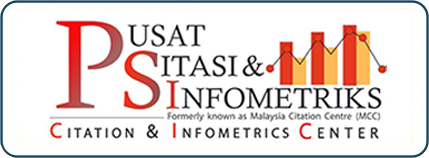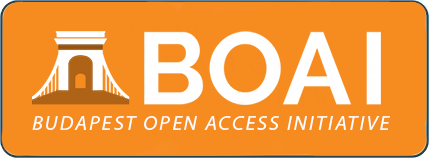Analysis of Intention to Use Digital Islamic Banking among University Students in Indonesia
DOI:
https://doi.org/10.33102/jmifr.526Keywords:
Islamic Digital Banks, Intention to Use, Attitude, Social Influence, FeaturesAbstract
The current growth of digital banks is accelerating. This can be seen from the number of users experiencing significant growth throughout the world, including Indonesia. Perceived usefulness and religiosity are important things to create attitude. If these things and social influence as well as features are perceived by potential users, it can lead to intention to use. The purpose of this research is to analyze the effect of perceived usefulness and religiosity through attitude and social influence as well as features as exogenous variables on intention to use on Islamic Digital Banks. This study uses quantitative research methods using SEM-PLS analysis techniques. Data collection was obtained through a Likert scale questionnaire. The sample collection used a convenience sampling technique with a sample size of 106 respondents. The sample criteria in this study were Muslim university students throughout Indonesia aged 20-24 years. The results indicated that perceived usefulness and religiosity have a positive influence on Intention to Use through Attitude towards Islamic Digital Banks. Meanwhile, social influence and features have a direct and significant positive effect on intention to use on Islamic Digital Banks. The conclusion of this research suggest that Islamic digital banks should actively coordinating with fatwa-making institutions to jointly declare that Islamic digital banks are not prohibited by Islam. Thus, the public will be more assured to use Islamic digital bank services, so that the number of customers will increase.
Downloads
References
References
Abou-Youssef, M. M. H., Kortam, W., Abou-Aish, E., & El-Bassiouny, N. (2015). Effects of religiosity on consumer attitudes toward Islamic banking in Egypt. International Journal of Bank Marketing, 33(6), 786–807. https://doi.org/10.1108/IJBM-02-2015-0024
Ahmad, J. (2020). Religiusitas, Refleksi dan Subjektivitas Keagamaan (Issue May). Deepublish Publisher.
Ajzen, I. (1991). The theory of planned behavior. Organizational Behavior and Human Decision Processes, 50(2), 179–211. https://doi.org/10.1016/0749-5978(91)90020-T
APJII. (2020). Laporan Survei Internet APJII 2019 – 2020. Asosiasi Penyelenggara Jasa Internet Indonesia, 2020, 1–146. https://apjii.or.id/survei
Arfi, W. Ben, Nasr, I. Ben, Kondrateva, G., & Hikkerova, L. (2021). The role of trust in intention to use the IoT in eHealth: Application of the modified UTAUT in a consumer context. Technological Forecasting and Social Change, 167(April 2020), 120688. https://doi.org/10.1016/j.techfore.2021.120688
Aziz, S., Md Husin, M., Hussin, N., & Afaq, Z. (2019). Factors that influence individuals’ intentions to purchase family takaful mediating role of perceived trust. Asia Pacific Journal of Marketing and Logistics, 31(1), 81–104. https://doi.org/10.1108/APJML-12-2017-0311
Babbie, E. (2007). The Basic of Social Research. In Wadsworth Publishing.
Wadsworth Publishing.
Bello Nabil, Haque Must. Fahinur, Adeyemi Adewale Abideen, & Hasan Aznan. (2017). Maqasid al-Sharīʿah and the online banking system: implications for service delivery. International Journal of Fiqh and Usul Al-Fiqh Studies (IJFUS), 1(1), 91–99.
Borasi, P., Khan, S., & Kumar, V. (2020). Digital Banking Platform Market by
Component (Solution and Service), Deployment Model (On-Premise and
Cloud), Type (Retail Banking and Corporate Banking), and Banking Mode
(Online Banking and Mobile Banking): Global Opportunity Analysis and
Industry Forec. Allied Market Research. https://www.alliedmarketresearch.com/digital-banking-platforms-market
Bryman, A. (2012). Social Research Methods, 4th Edition. In Oxford University
Press. http://marefateadyan.nashriyat.ir/node/150
Charag, A. H., Fazili, A. I., & Bashir, I. (2020). Determinants of consumer’s readiness to adopt Islamic banking in Kashmir. Journal of Islamic Marketing, 11(5), 1125–1154. https://doi.org/10.1108/JIMA-10-2018-0182
Chin, W. W., & Todd, P. A. (1995). On the use, usefulness, and ease of use of structural equation modeling in mis research: A note of caution. MIS Quarterly: Management Information Systems, 19(2), 237–246. https://doi.org/10.2307/249690
Chuttur, M. (2009). Association for Information Systems AIS Electronic Library (AISeL) All Sprouts Content Sprouts Overview of the Technology Acceptance Model: Origins, Developments and Future Directions. http://aisel.aisnet.org/sprouts_all
Creswell, J. W. & C. J. D. (2018). Research Design: Qualitative, Quantitative, and Mixed Methods Approaches. In SAGE Publications Inc. (Vol. 1999, Issue December). SAGE Publications Inc.
DataIndonesia.id. (2021). Jumlah Penduduk Indonesia Beragama Islam. Https://Dataindonesia.Id/. https://dataindonesia.id/ragam/detail/sebanyak-869-penduduk-indonesia-beragama-islam
Davis, F. D. (1989). Perceived usefulness, perceived ease of use, and user acceptance of information technology. MIS Quarterly: Management Information Systems, 13(3), 319–339. https://doi.org/10.2307/249008
Echchabi, A., & Olaniyi, O. N. (2012). Using theory of reasoned action to model the patronisation behaviour of Islamic banks’ customers in Malaysia. Research Journal of Business Management, 6(3), 70–82.
Guru, B., & Perera, C. J. (2003). An Evaluation Of Internet Banking Sites In Islamic Countries E-learning since the Pandemic View project Decision Making View project. In Article in Journal of Internet Banking and Commerce.
Hair, J. F., Sarstedt, M., Hopkins, L., & Kuppelwieser, V. G. (2014). Partial least squares structural equation modeling (PLS-SEM): An emerging tool in business research. In European Business Review (Vol. 26, Issue 2, pp. 106–121). Emerald Group Publishing Ltd. https://doi.org/10.1108/EBR-10-2013-0128
Hair Jr, J. F., Black, W. C., Babin, B. J. , A. R. E., Black, W. C., & Anderson, R. E. (2018). Multivariate Data Analysis. Wiley Series in Probability and Statistics.
Hutauruk, D. M. (2022). Fokus Perbesar Bisnis, Bank Aladin (BANK) Proyeksikan Baru Bisa Untung 3 Tahun Lagi. https://keuangan.kontan.co.id/news/fokus-perbesar-bisnis-bank-aladin-bank-proyeksikan-baru-bisa-untung-3-tahun-lagi#:~:text=Meski aplikasinya belum diluncurkan secara,160.000 hingga 9 Februari 2021.
Izzadin Nur, N. S. (2019). Pengaruh Faktor Internal dan Eksternal Bank Syariah Terhadap Keputusan Investasi Surat Berharga Bank Syariah. Jurnal Ekonomi Syariah Teori Dan Terapan, 6(4), 672–686.
Keller, K. (2016). Marketing Management. In Boletin cultural e informativo - Consejo General de Colegios Medicos de España (Vol. 22). Pearson.
Kementerian Agama Republik Indonesia. (n.d.). Terjemahan Al-Qur’an. https://quran.kemenag.go.id/
Laycock, R. (2021). Penggunaan Perbankan Digital 2021. https://www.finder.com/id/neo-bank
Malaquias, R.F. and Hwang, Y. (2019), “Mobile banking use: a comparative study with Brazilian and US participants”, International Journal of Information Management, Vol. 44, pp. 132-140, doi: 10.1016/j.ijinfomgt.2018.10.004.
Ming, J., Chen, R., & Tu, R. (2021). Factors Influencing User Behavior Intention to Use Mobile Library Application: A Theoretical and Empirical Research based on Grounded Theory. Data and Information Management, 5(1), 131–146. https://doi.org/10.2478/dim-2020-0037
Mohd Thas Thaker, H., Mohd Thas Thaker, M. A., Khaliq, A., Allah Pitchay, A., & Iqbal Hussain, H. (2022). Behavioural intention and adoption of internet banking among clients’ of Islamic banks in Malaysia: an analysis using UTAUT2. Journal of Islamic Marketing, 13(5), 1171–1197. https://doi.org/10.1108/JIMA-11-2019-0228
Mokhlis, S. (2006). The Effect of Religiosity on Shopping Orientation: An Exploratory Study in Malaysia. Journal of American Academy of Business, Vol. 9 No.(March 2006), 64–74. http://ieeexplore.ieee.org/document/5369175/
Mugo, D., Njagi, K., Chemwei, B., & Motanya, J. (2017). The Technology Acceptance Model (TAM) and its Application to the Utilization of Mobile Learning Technologies. British Journal of Mathematics & Computer Science, 20(4), 1–8. https://doi.org/10.9734/bjmcs/2017/29015
Negeri, U., & Webinar, J. (2022). The Future of Islamic Digital Banking Signifikansi dan Potensi Teknologi dalam Keuangan Syariah. April.
Olson, M. A., & Kendrick, R. V. (2012). Attitude Formation. In Encyclopedia of
Human Behavior: Second Edition (pp. 230–235).
https://doi.org/10.1016/B978-0-12-375000-6.00041-0
Qu, B., Wei, L., & Zhang, Y. (2022). Factors affecting consumer acceptance of electronic cash in China: an empirical study. Financial Innovation, 8(1). https://doi.org/10.1186/s40854-021-00312-7
Rafidah. (2014). Kualitas Pelayanan Islami Pada Perbankan. Nalar Fiqh, 10(2), 113–126.
Rahardian, L. (2022). Dari Hanya 500 ribuan, ARTO Kini Punya 1,4 Juta Nasabah. https://www.cnbcindonesia.com/market/20220311161529-17-322086/dari-hanya-500-ribuan-arto-kini-punya-14-juta-nasabah#:~:text=Jakarta%2C CNBC Indonesia - Jumlah nasabah,berasal dari akuisisi secara digital.
Ramli, M. M. Y., Hariani, S., Hamzah, A. P., & Usman, F. (2020). the Implication
of Features and Trust That Influence the Intention To Use the Digital Payment
Application. South East Asian Journal of Contemporary Business, Economics
and Law (Seajbel), 22(1), 105–113. https://seajbel.com/wpcontent/uploads/2020/10/SEAJBEL22_224.pdf
Rizkitysha, T. L., & Hananto, A. (2022). “Do knowledge, perceived usefulness of
halal label and religiosity affect attitude and intention to buy halal-labeled
detergent?” Journal of Islamic Marketing, 13(3), 649–670.
https://doi.org/10.1108/JIMA-03-2020-0070
Safari, K., Bisimwa, A., & Buzera Armel, M. (2022). Attitudes and intentions toward internet banking in an under developed financial sector. PSU Research Review, 6(1), 39–58. https://doi.org/10.1108/PRR-03-2020-0009
Sarstedt, M., Ringle, C. M., & Hair, J. F. (2014). Partial Least Squares Structural Equation Modeling. In Handbook of Market Research. https://doi.org/10.1007/978-3-319-57413-4_15
Schiffman, L. G., & Wisenblit, J. (2019). Consumer Behavior 12th Edition. In Pearson (Vol. 53, Issue 9).
Sekaran, B. (2013). Research Methods for Business: A Skill-Building Approach. Leadership & Organization Development Journal, 34(7), 700–701. https://doi.org/10.1108/lodj-06-2013-0079
Shin, D. H. (2009). Towards an understanding of the consumer acceptance of mobile wallet. Computers in Human Behavior, 25(6), 1343–1354. https://doi.org/10.1016/j.chb.2009.06.001
Souiden, N., & Rani, M. (2015). Consumer attitudes and purchase intentions toward Islamic banks: The influence of religiosity. International Journal of Bank Marketing, 33(2), 143–161. https://doi.org/10.1108/IJBM-10-2013-0115
Suhartanto, D., Dean, D., Ismail, T. A. T., & Sundari, R. (2020). Mobile banking adoption in Islamic banks: Integrating TAM model and religiosity-intention model. Journal of Islamic Marketing, 11(6), 1405–1418. https://doi.org/10.1108/JIMA-05-2019-0096
Surendran, P. (2012), “Technology acceptance model: a survey of literature”, International Journal of Business and Social Research 2(4),175-178. https://doi.org/10.18533/ijbsr.v2i4.161
Sutton, S., French, D. P., Hennings, S. J., Mitchell, J., Wareham, N. J., Griffin, S.,
Hardeman, W., & Kinmonth, A. L. (2017). Eliciting salient beliefs in research
on the theory of planned behavior: The effect of question wording. Planned
Behavior: The Relationship between Human Thought and Action, 22(3), 63–
https://doi.org/10.4324/9781315126449-5
Tuhin, M. K. W., Miraz, M. H., Habib, M. M., & Alam, M. M. (2022). Strengthening consumers’ halal buying behaviour: role of attitude, religiosity and personal norm. Journal of Islamic Marketing, 13(3), 671–687. https://doi.org/10.1108/JIMA-07-2020-0220
Usman, H., Mulia, D., Chairy, C., & Widowati, N. (2022). Integrating trust, religiosity and image into technology acceptance model: the case of the Islamic philanthropy in Indonesia. Journal of Islamic Marketing, 13(2), 381–409. https://doi.org/10.1108/JIMA-01-2020-0020
Venkatesh, V., Morris, M. G., Davis, G. B., & Davis, F. D. (2003). User Acceptance of Information Technology: Toward a Unified View. 27(3), 425–478.
Wei, M. F., Luh, Y. H., Huang, Y. H., & Chang, Y. C. (2021). Young generation’s mobile payment adoption behavior: Analysis based on an extended utaut model. Journal of Theoretical and Applied Electronic Commerce Research, 16(4), 1–20. https://doi.org/10.3390/jtaer16040037
Windasari, N. A., Kusumawati, N., Larasati, N., & Amelia, R. P. (2022). Digital-only banking experience: Insights from gen Y and gen Z. Journal of Innovation and Knowledge, 7(2), 100170. https://doi.org/10.1016/j.jik.2022.100170
Yaseen, S. G., El Qirem, I. A., & Dajani, D. (2022). Islamic mobile banking smart services adoption and use in Jordan. ISRA International Journal of Islamic Finance, 14(3), 349–362. https://doi.org/10.1108/IJIF-04-2021-0065
Downloads
Published
How to Cite
Issue
Section
License
Copyright (c) 2023 Rifa'i Tri Hantoro, Fatin Fadhilah Hasib, Dewi Rahmawati Maulidiyah, Widiyanti Ayu Nilasari, Rosyidah Wardah Hambali

This work is licensed under a Creative Commons Attribution 4.0 International License.















